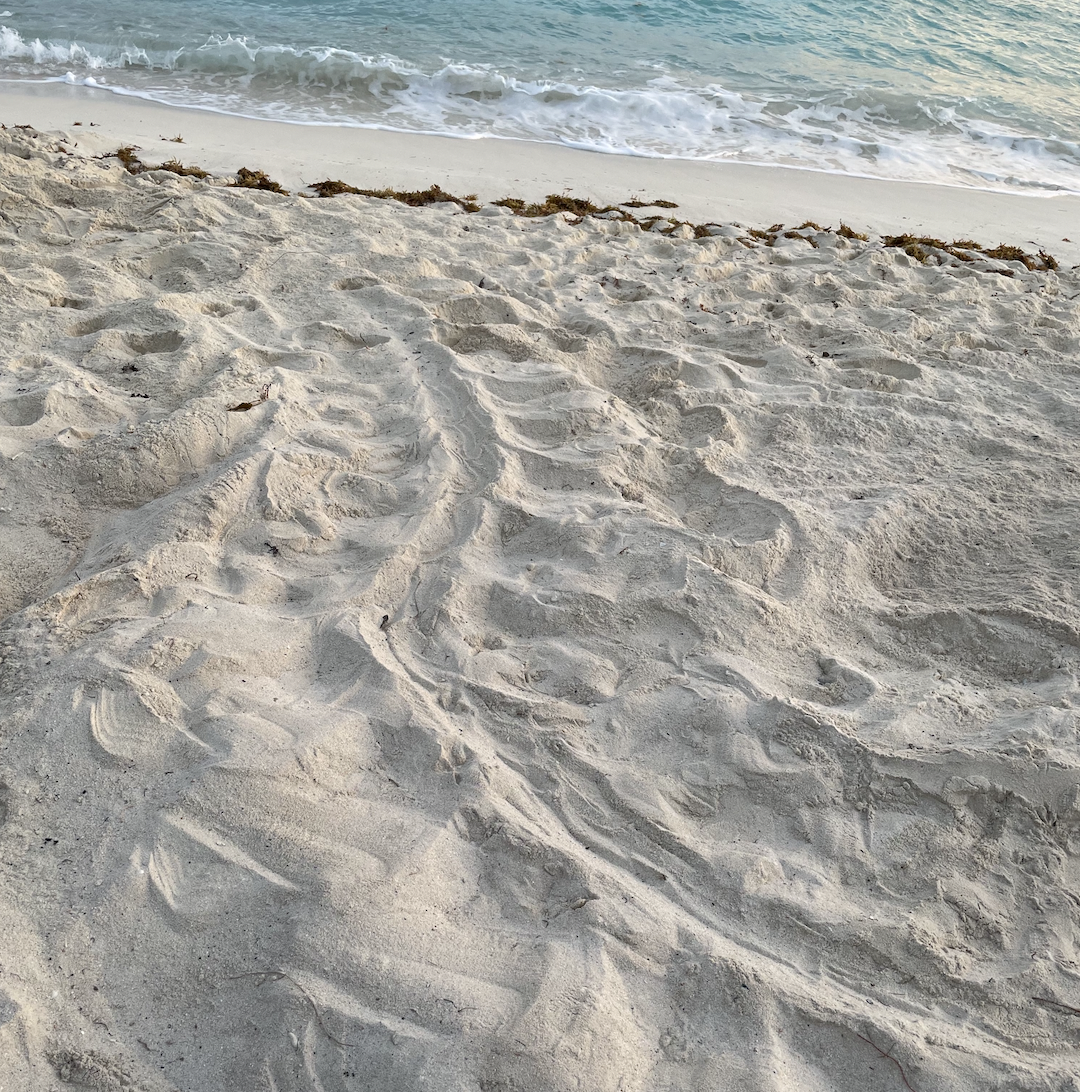Eight leatherback sea turtle nests have been documented on the beautiful beaches of the northern U.S. Virgin Islands. The largest and most ancient sea turtle species, leatherbacks, regularly nest on St. Croix and Puerto Rico, but they are rarely seen on St. Thomas or St. John.

Leatherback populations have recently been declining in the Northwest Atlantic despite being protected. In the past, leatherbacks were so abundant in the V.I. that some places, such as Trunk Bay, St. John, and Trunk Bay, Tortola, were named after leatherbacks – trunk being a common name for leatherback.
Dr. Paul Jobsis, UVI Center for Marine and Environmental Studies director, said that over the past 15 years, he has only been aware of three or four leatherback nests on St Thomas and one on St John.
“Having eight in one year is very special. The truth is we don’t know why some leatherbacks have decided to nest on St Thomas and St John this year. Whatever the reason, it is great to have them, and we hope they come back every year.”
Dr. Jobsis speculated that the reason could be related to climate change, a response to predation at their normal nesting beaches, new turtles returning to their natal beaches, or some combination of all these factors.

Leatherbacks nesting this year on St. Thomas and St. John are likely turtles that are known to researchers in Puerto Rico and St. Croix – they may just have wandered a little bit this year. Genetic samples will be collected from the nests and compared to the genetic library maintained by the National Oceanic Atmospheric Administration’s (NOA) Southwest Fisheries Science Center Marine Turtle Genetics Group. If the females laying the nests on St. Thomas and St. John have been sampled before, it should be possible to identify the individual turtles and where they have nested before, Dr. Jobsis said.
Under appropriate permits granted by the Department of Fish and Wildlife, UVI Graduate student Katie Ayres has been documenting sea turtle nesting activity for her master’s thesis. In addition, she is leading the St. Thomas Sea Turtle Nesting Program, created to involve community volunteers in local science to survey more beaches during the nesting season. For example, on St Thomas in 2021, they recorded 16 hawksbill nests and 1 green turtle nest. So far in 2022, they have observed one hawksbill nest and a surprising six leatherback nests. In addition, Katie has trained over 20 volunteers to identify sea turtle tracks and distinguish between nesting activities and tracks which did not result in a nest, sometimes called “false crawls.”
Anyone in the community who likes morning beach walks and would like to help monitor sea turtle nests on St. Thomas, please contact Katie Ayres at the UVI Sea Turtle Nesting Project UVISeaTurtleNesting@gmail.com.
For more information, contact pr@uvi.edu.





